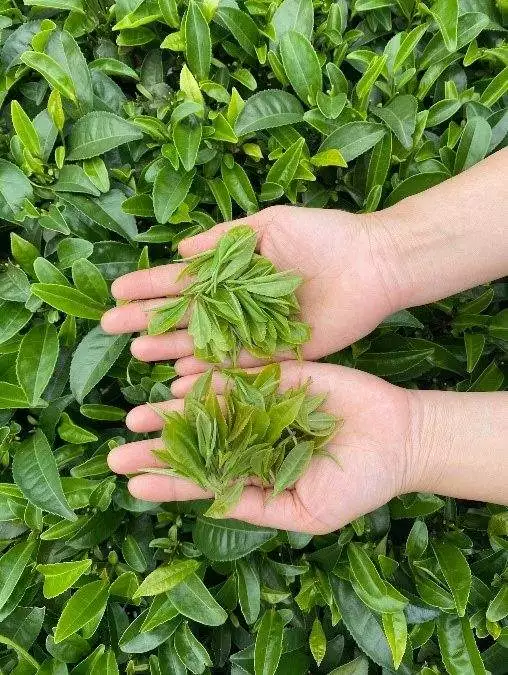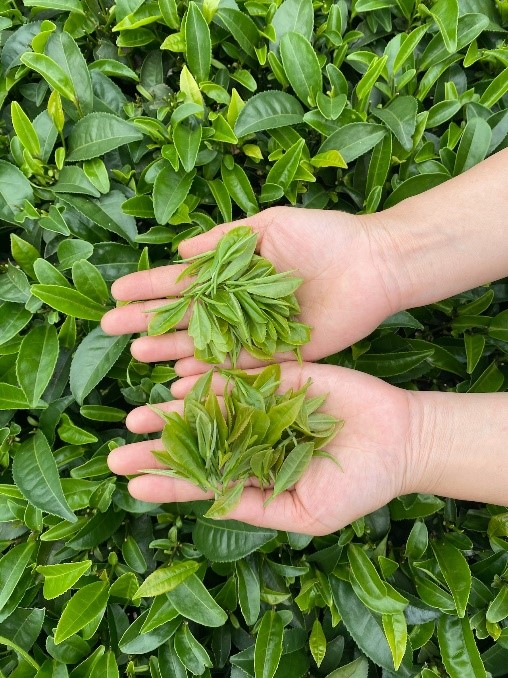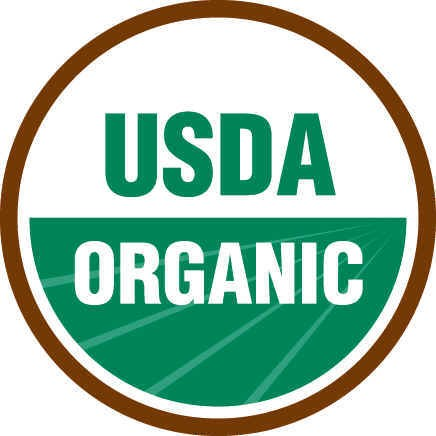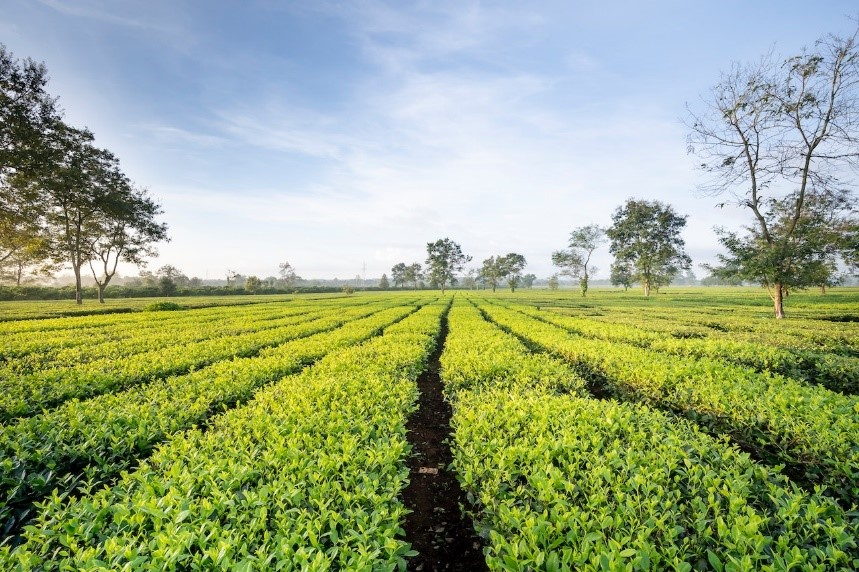
Green Tea : Organic vs. Non-Organic
Thesis: Organic Green Tea provides numerous health benefits due to its abundance of antioxidants, amino acids, and catechins, such as EGCG, known to prevent several diseases. Organic Green Tea also has less caffeine and possesses L-Theanine, which provides protracted alertness without the sudden rush of energy and crash caused by coffee. The designation of Organic Green Tea requires strict adherence to USDA regulations, which promotes environmental sustainability and human health.
Aside from water, tea is the most popular drink in the world. Around 3 billion grams of tea are consumed annually.
Over 80% of US households have some form of tea in their cupboards. Green Tea accounts for around 15-20% of that. While black tea remains the most popular (78% worldwide), Green Tea is growing, and there’s a good reason. For one, it’s good for you, and two, it’s pretty good tasting.

Below are some “good for you” reasons and possibly why tea is better than coffee!
Health Benefits
- Anti-oxidants. Green Tea is known for its many good qualities, from having an abundance of anti-oxidants, which lower bad cholesterol, improve heart and gut health, and prevent some cancers. Several studies show that polyphenolic compounds in tea reduce the risk of many diseases, so says a 1993 study conducted by Yang and Wang.
- L-Theanine. Green Tea also possesses the amino acid called L-Theanine, which can cross the blood-brain barrier. This is a rare compound almost exclusive to Green Tea. People use L-theanine to improve mental functions like curbing stress and helping with anxiety.
- Catechins. We can’t forget catechins. They belong to a subgroup of polyphenols called Flavinoids.
- EGCG. And then there’s that crazy EGCG, a catechin component. This plant compound primarily found in tea helps with inflammation, weight loss, and heart and brain diseases caused by free radicals.
The health governing bodies in the West don’t approve the health claims of tea like the Asian and European studies do, so you’ll have to try some and see for yourself. Be sure to let us know of the health benefits you get!
Coffee and Tea
Caffeine is a naturally occurring chemical found in the leaves, beans, and fruits of more than 60 plants, including coffee and tea. Coffee gets all the caffeine credit, but unlike coffee, the caffeine in tea is less quantified and affects you a little differently.
Caffeine Differences
While the caffeine content in an 8 oz cup of coffee is around 150 mg, there’s only 30-50 mg in a cup of Green Tea. Studies have shown that the L-Theanine (mentioned earlier) in green tea has a synergistic effect with caffeine, creating a better caffeine buzz that doesn’t cause a sudden rush of energy and subsequent crash like coffee. There’s more protracted alertness with tea.
Tea is a smooth and inviting drink, both hot and cold (my preference). People have known about green tea for millennia and have used it for hydration, medicinal use, entertainment purposes, temple ceremonies, and spiritual reasons. It seems to be a drink for all occasions.
Matcha Green Tea
One of the most popular green teas out there is Matcha. If you’ve never had matcha, it’s unlike any tea you’ve ever had. It is a bright green powder. This is because making Matcha involves using the whole leaf of the Camellia Sinensis plant.
Through an old-school technique of slow & steady stone-grinding, a very fine powder is created. This powder is mixed directly in water, which allows you to consume the entirety of the leaf. This way, you don’t miss out on the good stuff that tea provides. You don’t just steep the leaves and discard them when done.
There are varying grades of Matcha: “cooking,” “culinary,” and “ceremonial” grades. Expect to pay a good bit more for the ladder. Look for more interesting information on this type of tea in future blog posts from Lubba Tea.

Going Organic
So, what could make this miracle drink better? How about growing it organically? Yes, Organic Green Tea! It’s not just for the uppity class; regular folks demand it.
One would think that Organic Green Tea would involve merely the absence of chemicals in the growing process. Still, it’s a bit more complicated if you factor in what the official organic governing body wants.
USDA Approval
Having an Organic Green Tea designation, sanctioned by the United States Department of Agriculture (USDA), requires effort, and a lot of it, not just in the growing part. They establish strict rules in all aspects of the process…like paperwork and reporting. However, those with their in-house CPA, shouldn’t have to worry too much about that.
What To Look For

You can identify Organic Green Tea by spotting that little round, green USDA Organic certification label on the packaging (as in above). As mentioned, it means the grower of the tea has adhered to some pretty strict rules.
The Process
The process of becoming “organic” has its challenges. The actual designation, and the little green ball, is awarded to a grower who endures 5 specific requirements. Right off of the USDA’s website, they include:
- The farm or business adopts organic practices, selects a USDA-accredited certifying agent, and submits an application and fees to the certifying agent. (Which might seem like three steps to some, present company included).
- The certifying agent reviews the application to verify that practices comply with USDA organic regulations.
- An inspector conducts an on-site inspection of the applicant’s operation.
- The certifying agent reviews the application and the inspector’s report to determine if the applicant complies with the USDA organic regulations.
- The certifying agent issues the organic certificate.
Additional Steps To Throw In Here
I would add step 6: Wait three years before using such labeling until your land has worn off the prohibited non-organic substances the grower previously used on the farmland. The USDA said they could provide technical assistance during the transition, but I wouldn’t count on them coming over, hoe in hand.
And Step 7: Spend a lot on USDA Organic Green Tea fees. The USDA offers “financial assistance,” but it still doesn’t take the bite out of having to sacrifice a portion of your sales income, in perpetuity, to pay for a little green ball of acceptance. Not gonna lie; this process might exclude smaller tea growers because of the added expense and paperwork involved.
And step 8: Annual inspections of your tea farm to verify compliance require documentation of their processes at every step. As the USDA states on its website, “Organic [green tea] on-site inspections account for every component of the operation, including seed sources, soil conditions, crop health, weed and pest management, water systems, inputs, contamination and commingling risks and prevention, and record keeping.” Wow, I want to grow & sell good tea, but as the USDA states, “USDA organic products are verified organic at all steps between the farm and the store.”
Organic Green Tea farmers who endure can supply discerning tea-drinking customers with the satisfaction that they are consuming an officially designated Organic Green Tea farm.

This is not to say that tea farms, which don’t sport organic certification, don’t supply very good, sustainable, and naturally grown tea. Because they do. There are growers worldwide who farm cleanly and responsibly who would otherwise qualify as organic but have chosen not to use the USDA labeling due to what they perceive as counterproductive results. Some, or perhaps many, cannot afford the expense or don’t have the resources to dedicate to the reporting aspects.
As of the time of this article, some of our best Oolong suppliers still can’t afford the extra expense of the little green ball, but they have met our stringent requirements.
The difference here is that USDA Certified Organic Green Tea growers have paid hefty dues to have government oversight added to their operations. They are big enough to dedicate staff to fulfill government requirements.
In Summary
In a perfect world, this designation adds value and is beneficial, but some say there are inherent problems with the organic certification process. First, even though growers are to supply documentation of intricate details of their farming process, such as watering intervals and tractor usage time, there’s no way to verify all of the steps. And if it can’t be done all the time, how can we be assured of quality every time? Secondly, consumers complain about the fact that GMO’s (genetically modified organisms) are allowed to be utilized in the process of attaining the “organic” designation. Thirdly, in an article from a paper of record, it has been said that “playing by the organic-certification rules was becoming an increasingly inorganic process.”

Having covered all that, if one’s tea is truly grown organically, with or without the little green ball, then we should be able to save the planet, achieve good health, attain culinary bliss, and bring on a much-needed chill vibe in a freshly brewed cup of Organic Green Tea.
Interested in a green tea history lesson? Check out our article on the Top 13 Tea Varieties in China.

Recent Comments